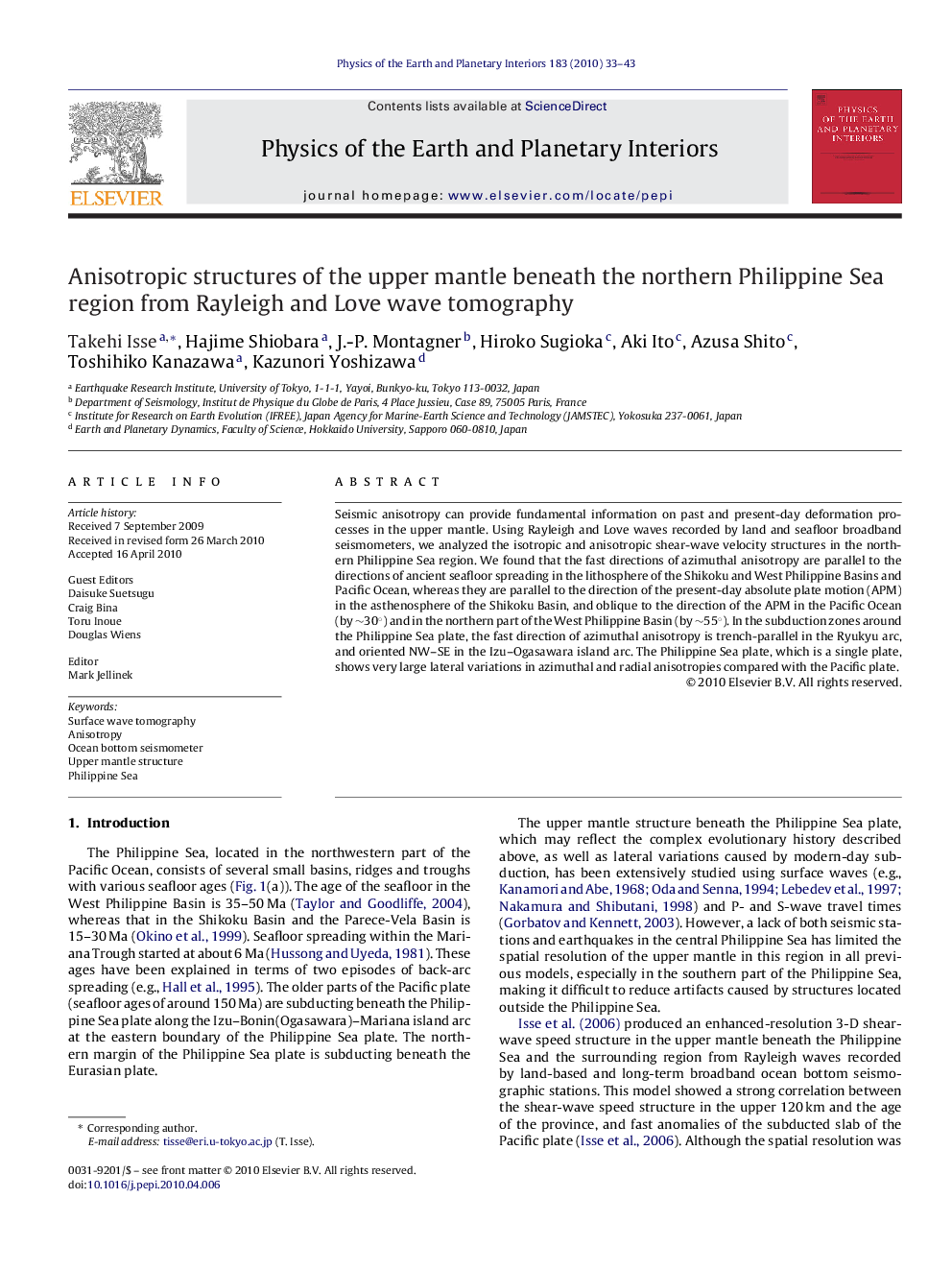| Article ID | Journal | Published Year | Pages | File Type |
|---|---|---|---|---|
| 4742152 | Physics of the Earth and Planetary Interiors | 2010 | 11 Pages |
Seismic anisotropy can provide fundamental information on past and present-day deformation processes in the upper mantle. Using Rayleigh and Love waves recorded by land and seafloor broadband seismometers, we analyzed the isotropic and anisotropic shear-wave velocity structures in the northern Philippine Sea region. We found that the fast directions of azimuthal anisotropy are parallel to the directions of ancient seafloor spreading in the lithosphere of the Shikoku and West Philippine Basins and Pacific Ocean, whereas they are parallel to the direction of the present-day absolute plate motion (APM) in the asthenosphere of the Shikoku Basin, and oblique to the direction of the APM in the Pacific Ocean (by ∱/430°) and in the northern part of the West Philippine Basin (by ∱/455°). In the subduction zones around the Philippine Sea plate, the fast direction of azimuthal anisotropy is trench-parallel in the Ryukyu arc, and oriented NW•SE in the Izu•Ogasawara island arc. The Philippine Sea plate, which is a single plate, shows very large lateral variations in azimuthal and radial anisotropies compared with the Pacific plate.
